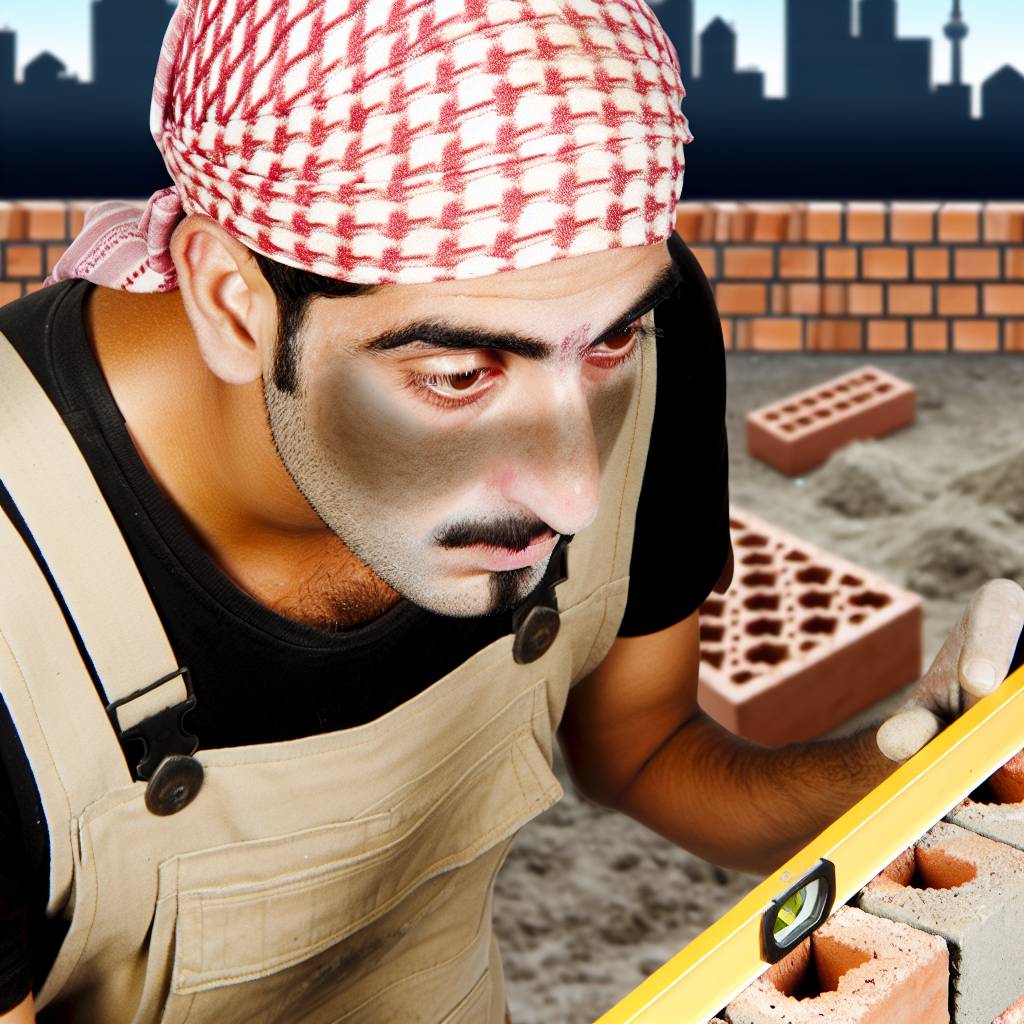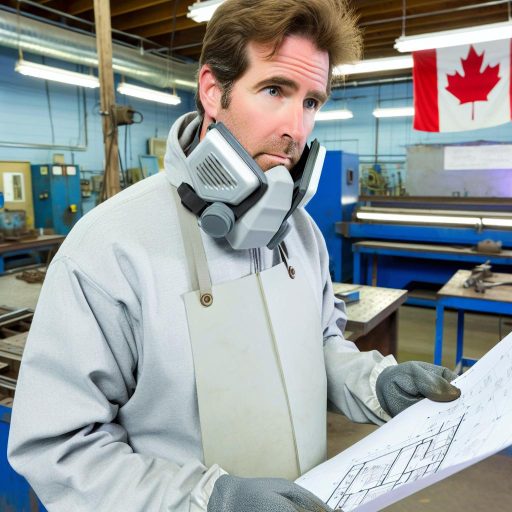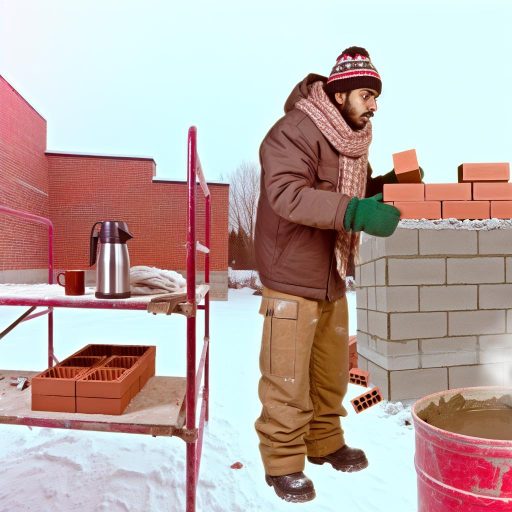Understanding the Importance of Quality Control in Bricklaying Projects
The Role of Quality Control
Quality control plays a crucial role in bricklaying projects.
It ensures that brick structures are safe and durable.
Moreover, it guarantees that work meets industry standards.
In addition, high-quality work can improve aesthetics.
Quality control reduces repairs and maintenance costs.
Benefits of Maintaining High Standards
Maintaining high standards enhances customer satisfaction.
It builds a company’s reputation for reliability.
Furthermore, quality workmanship attracts repeat business.
Quality control can lead to fewer project delays.
Thus, investing in quality yields long-term savings.
Implementing Quality Control Measures
Implementing effective quality control measures is essential.
First, establish clear project guidelines and standards.
Next, train workers on best practices for bricklaying.
Regular inspections during the project are also necessary.
Additionally, using high-quality materials contributes to success.
Key Components of Quality Control
Several key components aid in quality control efforts.
- Detailed project planning ensures clarity.
- Frequent communication fosters collaboration.
- Utilizing skilled labor enhances workmanship.
- Adopting modern techniques can boost efficiency.
These components work together to uphold quality.
Select High-Quality Materials for Optimal Durability and Aesthetics
Understanding Material Quality
Choosing the right materials significantly impacts the longevity of your bricklaying projects.
High-quality bricks withstand various weather conditions effectively.
Moreover, they maintain structural integrity over time.
Pay attention to the moisture content in bricks before purchasing.
Low moisture content typically indicates better durability.
Evaluate Brick Types
Different types of bricks offer varied advantages.
For example, clay bricks provide excellent insulation properties.
Concrete bricks are stronger and ideal for heavy loads.
Unlock Your Career Potential
Visualize a clear path to success with our tailored Career Consulting service. Personalized insights in just 1-3 days.
Get StartedAssess your project requirements to select suitable brick types.
Consider Aesthetic Factors
Quality materials enhance the visual appeal of your project.
Be mindful of color and texture when selecting bricks.
Consistent coloring throughout the batch ensures uniformity.
Additionally, consider the size and shape of bricks for better design options.
Source from Reputable Suppliers
Purchasing from reputable suppliers impacts your material quality significantly.
Research local suppliers to find those known for high standards.
Request certifications to verify material quality before buying.
Reading customer reviews can also guide your decision-making process.
Conduct Pre-Installation Checks
Before installation, inspect all materials thoroughly.
Check for any visible defects or inconsistencies.
Consider performing water absorption tests on bricks.
Ensure the materials meet local building codes and standards.
Ensure Proper Site Preparation Before Beginning Bricklaying Work
Assess the Site Conditions
Begin by evaluating the site for any potential obstacles.
Identify any existing structures that may interfere with the project.
Check the ground conditions to ensure stability.
This assessment helps in determining necessary groundwork.
Clear the Work Area
Remove any debris or vegetation from the site.
This step creates a clean and safe working environment.
Ensure that the area is free of any hazards.
A tidy workspace enhances safety and efficiency.
Establish a Level Foundation
Use a level tool to check the ground’s evenness.
An uneven surface can lead to misaligned bricks.
If necessary, excavate or fill areas to achieve level ground.
A solid foundation is crucial for structural integrity.
Mark the Layout Accurately
Utilize string lines or stakes to outline the brickwork.
Clear markings help guide the bricklaying process.
Ensure lines are straight and measurements are correct.
This preparation prevents mistakes and rework down the line.
Plan for Drainage
Incorporate drainage considerations into the site preparation.
Proper drainage prevents water accumulation around the structure.
Evaluate the natural slope of the land for effective drainage.
Ensure that downspouts direct water away from the building.
Gather Necessary Tools and Materials
Collect all required tools and materials before starting.
Having everything on hand contributes to a smooth workflow.
Check that the bricks are of adequate quality and consistency.
Proper tools ensure precision in your bricklaying tasks.
Explore Further: Tips for Roofers to Build a Strong Client Base
Implement Accurate Measuring and Leveling Techniques
Importance of Precision
Precision is essential in bricklaying projects.
It directly influences the structural integrity of the work.
Moreover, accurate measurements prevent costly errors.
Tools for Measuring
Utilize high-quality measuring tools for best results.
Consider using a tape measure for linear measurements.
Employ a laser level for precise leveling across distances.
Additionally, a plumb line can ensure vertical accuracy.
Measuring Techniques
Start by measuring the area where you plan to work.
Mark your measurements clearly for reference.
When measuring, double-check your figures for accuracy.
Use a square to ensure corners are perfectly right-angled.
Leveling Basics
Leveling is crucial for an even brick surface.
Always use a level to check your work frequently.
Establish a consistent reference line before beginning.
This helps maintain uniformity throughout the project.
Regular Checks
Check your measurements regularly to avoid mistakes.
Adjustments during installation can save future labor.
Consistency leads to superior results.
Gain More Insights: How to Price Your Work as a Professional Upholsterer
Follow Industry Standards and Building Codes During the Project
Understanding Industry Standards
Industry standards ensure safety and quality in construction projects.
They provide clear guidelines for materials and techniques.
Adhering to these standards is essential for every bricklaying project.
Importance of Building Codes
Building codes are legal regulations established by local authorities.
They dictate the minimum requirements for constructing buildings.
Compliance with these codes protects the public and structures.
Failing to meet these requirements can result in penalties.
Researching Local Regulations
Before starting any project, research local building codes.
Codes vary significantly between jurisdictions, so accuracy is key.
Check with local authorities or a reliable resource online.
Using Quality Materials
Quality materials meet specific industry standards and building codes.
Always source bricks and mortar from reputable suppliers.
Perform inspections to ensure materials comply with standards.
Conducting Regular Inspections
Regular inspections during construction help maintain quality.
Schedule inspections at key project milestones to ensure compliance.
This practice helps catch any issues early in the process.
Training and Education
Invest in training programs for all workers involved.
Educated workers are better equipped to adhere to industry standards.
Ongoing education ensures everyone stays updated on regulations.
Explore Further: How to Start a Career as a Metal Fabricator in Canada

Maintain Clean Work Areas to Prevent Contamination and Damage
Importance of Cleanliness
Maintaining clean work areas enhances project quality.
It reduces the risk of contamination from dust and debris.
Additionally, a tidy workspace promotes safety for all workers.
Regular Cleaning Schedule
Establish a regular cleaning schedule for the work site.
Assign specific times for cleaning tasks throughout the day.
Ensure all team members are aware of their responsibilities.
Organizing Materials
Organize materials to avoid clutter on-site.
Place tools and supplies in designated areas for easy access.
Use labeled containers to help identify materials quickly.
Waste Management
Implement a waste management plan on-site.
Provide receptacles for different types of waste.
Encourage recycling whenever possible to minimize waste.
Daily Inspections
Conduct daily inspections of the work area.
Look for potential hazards or areas needing attention.
Address issues promptly to maintain a safe environment.
Explore Further: Ironworker Skills and Tools Every Beginner Should Master
Inspect Bricklaying Work Regularly Throughout the Project Timeline
Establish a Routine Inspection Schedule
Consistent inspections help maintain the quality of bricklaying projects.
Develop a schedule that includes weekly and milestone inspections.
Consider documenting findings to keep track of progress.
Utilize Checklists During Inspections
Checklists ensure that no critical elements are overlooked.
Include items such as alignment, mortar consistency, and overall appearance.
Regularly update checklists based on project-specific needs.
Engage Experienced Team Members
Involve skilled professionals in the inspection process.
Their expertise can catch issues earlier than less experienced workers.
Encourage open communication about any observed problems.
Respond Quickly to Identified Issues
Address problems immediately to prevent further complications.
Implement corrective actions based on inspection feedback.
Regular follow-ups can help ensure issues are resolved properly.
Maintain Documentation of All Inspections
Keep detailed records of each inspection conducted.
This documentation serves as a reference for future projects.
It also helps in identifying repeated issues for better solutions.
Training and Supervision of Workers
Establish Comprehensive Training Programs
Begin by creating detailed training materials for workers.
Include information on quality standards and techniques.
Ensure all training sessions are hands-on and interactive.
Invite experienced bricklayers to conduct training sessions.
Regularly update training content to reflect industry changes.
Implement On-Site Supervision
Assign a skilled supervisor to each bricklaying project.
This supervisor should oversee all daily operations actively.
Regularly monitor the work quality and adherence to standards.
Provide immediate feedback to workers during the project.
Encourage supervisors to foster an open communication environment.
Conduct Regular Quality Inspections
Establish a routine for conducting quality inspections.
Inspect work at various stages to catch issues early.
Document findings and share them with the team immediately.
Focus on identifying root causes of any quality issues.
Utilize digital tools for efficient tracking of quality metrics.
Encourage Continuous Learning
Promote a culture of continuous improvement among workers.
Encourage team members to share best practices regularly.
Provide access to workshops and certifications in masonry.
Recognize and reward workers who demonstrate exceptional skills.
Create a mentorship program pairing experienced workers with novices.
Additional Resources
NCCER: National Center for Construction Education & Research
OFAC Consolidated Frequently Asked Questions | Office of Foreign …




